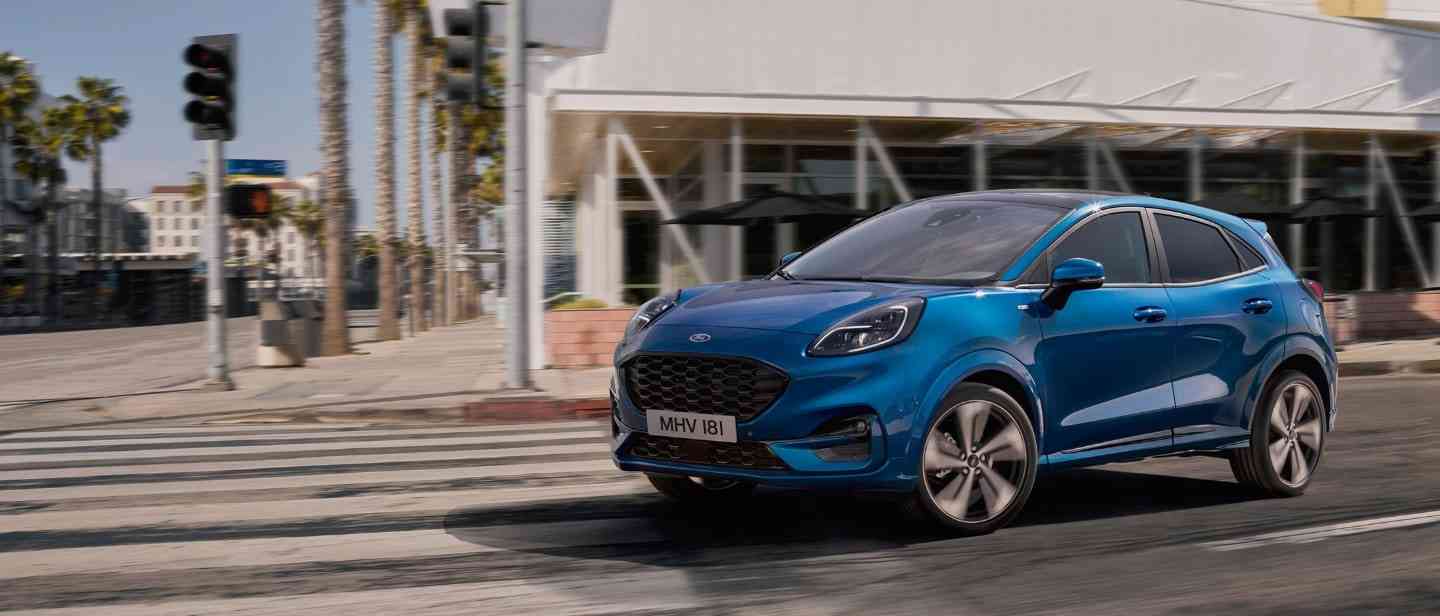
THE Ford Puma is an athletic crossover that has been greatly improved upon from the EcoSport.
The announcement that the Fiesta, Figo, and EcoSport would be going out of production gave the idea that purchasers would have to hunt elsewhere if they were not interested in Mustangs, Rangers, Everests, or Tourneau vans.
The Puma small crossover finally made its way to Silverton in South Africa four years after its initial release in other countries, satisfying the company's requirement for a new vehicle.
I saw a plethora of these bug-eyed, three-cylinder offerings on the streets of Europe last year. The seventh-generation Fiesta serves as the foundation for their construction in Hungary.
Coming into a crowded sector in its home market, it will compete with the likes of the Opel Mokka, Hyundai Kona, and Volkswagen T-Roc.
Despite not yet dominating the sales charts, it consistently sells about 80 units each month down South.
Ford made it clear at the Puma's unveiling that it does not intend to replace the EcoSport. Despite appearances, the Puma outshines the EcoSport in terms of length, width, and cargo capacity.
A titanium-trimmed Ford Puma
- Ford Puma born from Fiesta crossover DNA
Keep Reading
I also think the Puma is more aesthetically pleasing, but that is just my opinion.
Its distinctive wheel arches, "canoe-shaped" headlights mounted high on the wings, grille design, and sloping roof give the impression that its designers were determined to make it stand out.
The "entry-level" Titanium Puma that I tested featured a 17-inch alloy wheel design, a metallic grey rear diffuser and skid plate, high gloss black window surrounds, and chrome grille, side skirts, and fog lights.
A seven-speed dual clutch automatic gearbox sends power to the front wheels of both the Titanium and ST-Line Vignale from Ford's tried-and-true three-cylinder turbocharged EcoBoost gasoline engine, which produces 92 kW and 170 Nm of torque.
Thanks to its European specifications, the Puma interior exudes an air of sophisticated elegance with its plush upholstery and high-quality fittings and accents.
Ford claims the Titanium's sculptured slim-back shape maximises knee space for rear passengers, and the seats, finished in fabric with metal grey stitching, are pleasant and supportive.
Possibly, but a lengthy journey would be unpleasant with my almost adult kid in the rear and the sloped roof. An analogue rev counter and speedometer with a central digital display for consumption, settings, and the like are still present on my test Titanium Puma, in contrast to the ST-Line's almost ubiquitous digital driver display.
Even though we have become used to and spoilt with the upgraded SYNC4 on the new Rangers and Everests, Ford's older SYNC3 is still one of the best and simplest systems available, and it is attached to the eight-inch touchscreen infotainment system.
While the wireless charging pad does support Apple CarPlay and Android Auto, I found that attaching my device via a cable using one of the two USB ports worked best for me.
Even though puddle lights are so commonplace today, I really like how the puma jumps up and down as you open the door.
The Fiesta platform gives the Puma excellent handling characteristics, almost beyond what is required for its target market.
2020 Ford Puma Titanium
There is no annoying thrum, which is common with three-cylinder engines, and the award-winning three-pod engine makes for an exciting and enjoyable ride.
Although there is a little turbo lag before takeoff, the engine is a very cooperative mill that has no problem going all the way to redline once the turbo starts to spin up. It has little trouble cruising at highway speeds, and it will accelerate quickly to overtake slower traffic.
Normal, Eco, Sport, Slippery, and Trail are the five available driving modes that modify the vehicle's handling, gear shifting, and throttle response.
For most of my driving, I used the basic normal setting because it works well for both short commutes and longer road trips. Switching to Sport on a winding pass into Hartbeespoort revealed some smart handling, but the Puma ran out of steam quite soon between second and third gear, despite its pleasant and elevated driving position, which gave a great perspective of the surroundings.
Gear shifts were smooth and easy, while steering paddles would have been nice to have (but that is probably not going to matter to potential buyers).
As compared to Ford's stated 5.3 litres per hundred kilometres, fuel usage after one week of mixed driving was 7.2 liters per 100 kilometres.
You would expect a plethora of amenities and respectable safety technologies to come standard on a reasonably priced vehicle like the Puma.
Safety equipment
All-Season Brake System (ABS), Electronic Stability Control (ESC), Hill Launch Assist (HLAS), Tyre Pressure Monitoring (TPM), Auto High Beam Headlight Activation (AHBA), Lane Keeping System (LS) with LS Aid and Alert features, and Lane Departure Warning (LDW) are all well-equipped.
To keep the car from veering off the road, Road Edge Detection detects where the pavement stops and provides steering power accordingly.
On top of that, your pre-collision assist system includes post-collision braking and pedestrian detection.
Filling the void created by their lack of passenger vehicle alternatives, the Ford Puma is an expensive but welcome addition to the wider family.
My decision
Therefore, if you are seeking the latest version, you might want to hold off until its international release. It has been heavily upgraded. The Ford Puma is a great option if you are shopping for a tiny crossover because of its charming appearance.
Those seeking the segment's most thrilling driving experiences will find this to be particularly true. While we eagerly await the Puma's arrival within our borders, I must admit that the local dealership pushes the Ford Ranger and Everest mostly. This must be a business decision premised on concentrating on models that they can be market leaders.
Specifications
- Type Turbo: Direct/Indirect Injection
- Size (L): 1.0L
- Camshaft: Variable double overhead cam
- Power: 92kW
- Torque: 170Nm
- Fuel Combined (L/100km): 5.3
- Tank Size (L): 42
- [email protected].










